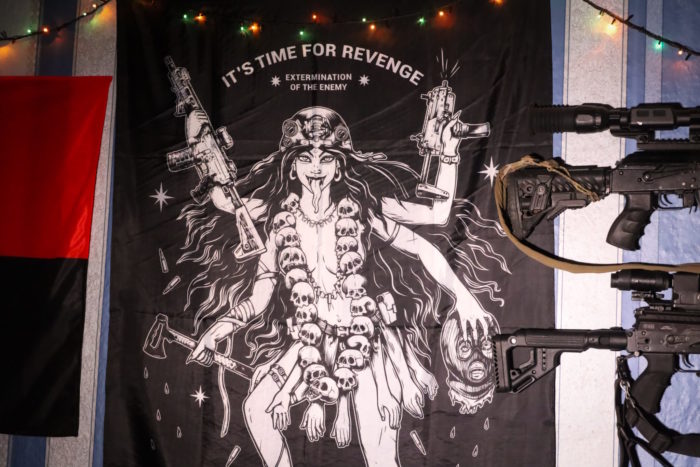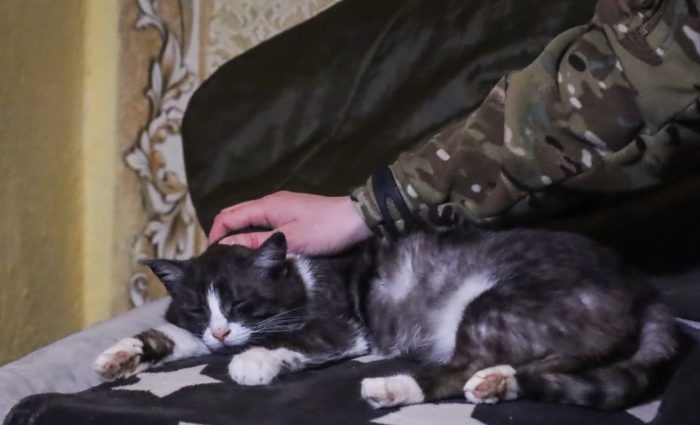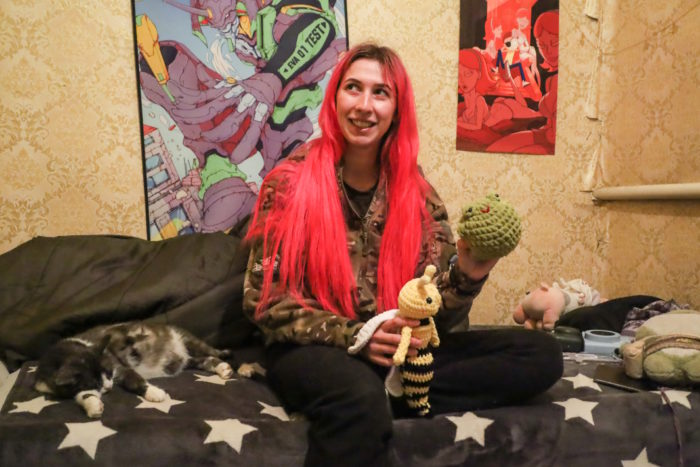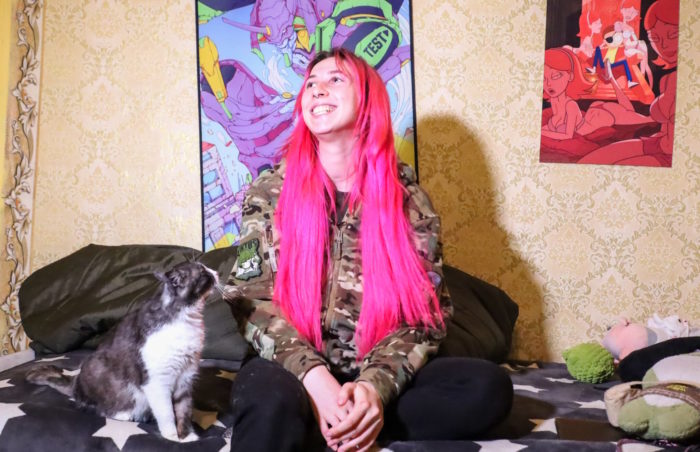Junior Sergeant Valeriya, call sign “Osa” (Wasp) resembles more of an anime character than a leader of an anti-tank squad.
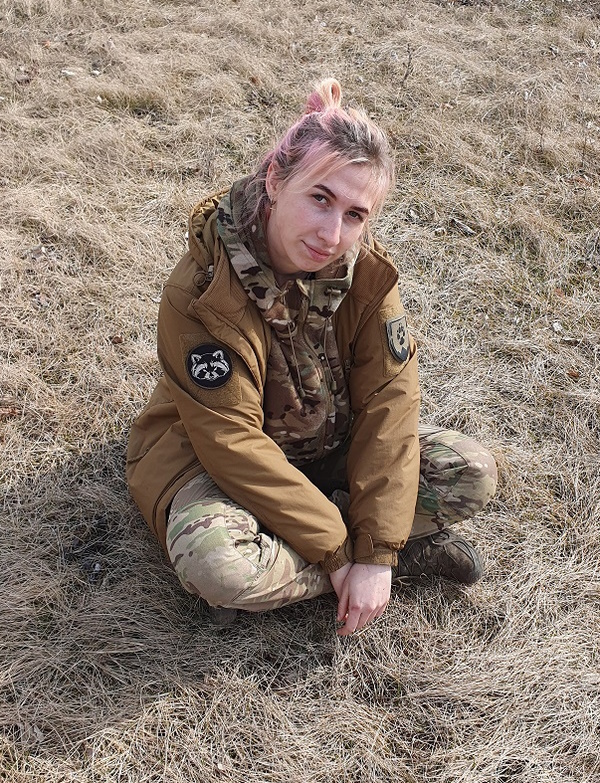
“When Russia invaded, I asked the commander to send me to my unit, but they didn’t want to let me go… maybe because I’m a woman, I don’t know! I used all my connections to get to Zaporizhzhia with the reserves.”
First days on the frontline
Osa recalls her arrival on the frontline… Rain and cold enveloped the soldiers as they huddled like rats in a tube beneath the road. There was hardly any space to move around, so when someone went on duty, another person took their place to sleep. The radio transmitter crackled and a distant voice informed that a column of Russian vehicles would be passing by soon. They were probably refueling somewhere, and Osa’s unit was waiting for them with three Corsar anti-tank missile systems and a Fagot anti-tank guided missile. Their task seemed simple, but things quickly become complicated. First, an intense artillery bombardment began, and everything was a blur. Osa quickly positioned the Corsar on the road.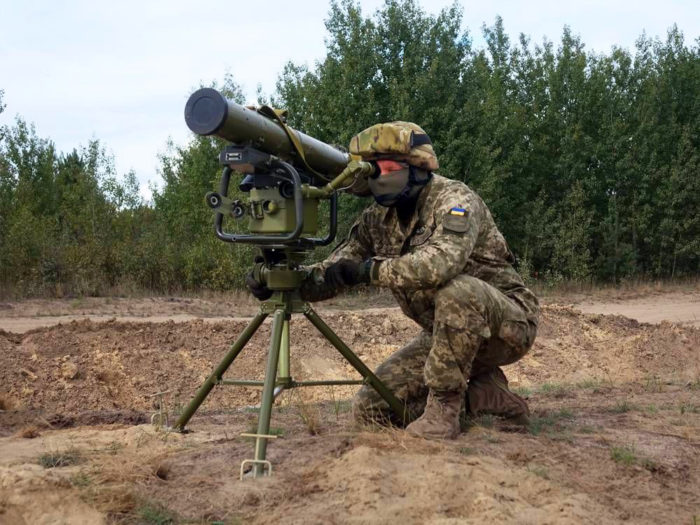
“I had to try again… so, I ran out into the road, grabbed that rocket, dragged it to the Corsar, set it up - and bang, hit it square on! I get out of there as fast as possible, leave the Corsar as it didn’t make sense to try and pull it away. We would have just been targeted and shot.”

“That day, despite my personal success with bringing down those enemy tanks, I felt defeated. This is my region, and now it was in the hands of the Russians.”
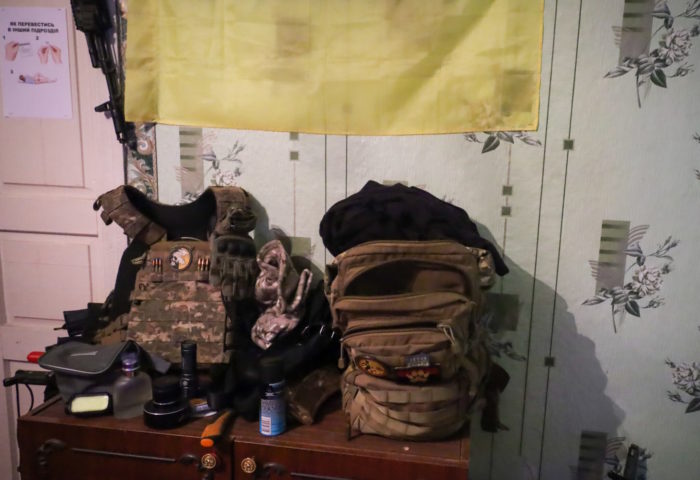
When you get wounded, you realize that you’re mortal
Osa’s unit was getting ready for the next battle when the shelling began and bullets started whistling around. As Osa lay down on the road with her Fagot anti-tank missile system, suddenly something hit her, causing a bright flash before her eyes and a dull pain in her knee.“I shouted to my men that I was wounded. One of them applied a tourniquet and dragged me to cover,” Osa recalls.Despite the continuing sound of whistling bullets, they managed to put her on a ZIL army truck.
“It was terrifying, but we had to get out!” she says.
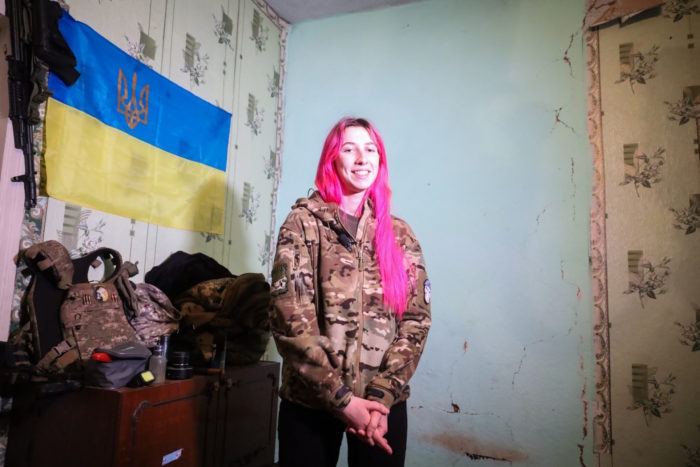
“I call my injury ‘the Joker smile’”
Osa considers herself fortunate that only her tissues were damaged and not her ligaments, which would have required a longer rehabilitation period. She now sports an unsightly scar on her knee, which she affectionately refers to as her “Joker smile”.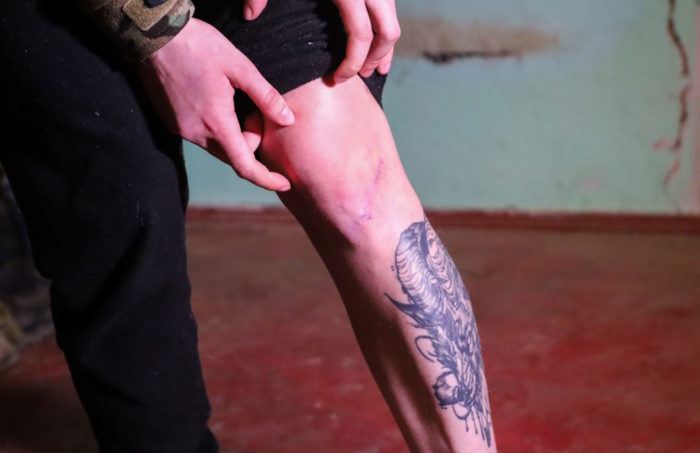
“I spent a significant amount of time with a psychotherapist, revisiting my past traumas and experiences of war. It was necessary to address my internal wounds as well, as so few of our regular contract soldiers had survived without injury. Many of them were killed or wounded. That’s just the reality of war.”
Returning to the brigade
After completing her rehabilitation, Osa rejoined her brigade in late May and was deployed to Yakovlivka at the beginning of summer. She was given a new anti-tank guided missile system, the Stugna, and her platoon leader taught her how to use it. Osa appreciates the Stugna because of its longer range and safety compared to the Corsar. She can stay farther away from the enemy, hide in a trench, or simply wait.“I recently hit another tank. We were moving with our platoon leader when we suddenly stumbled upon an enemy IFV. I launched my Stugna and took it down.”
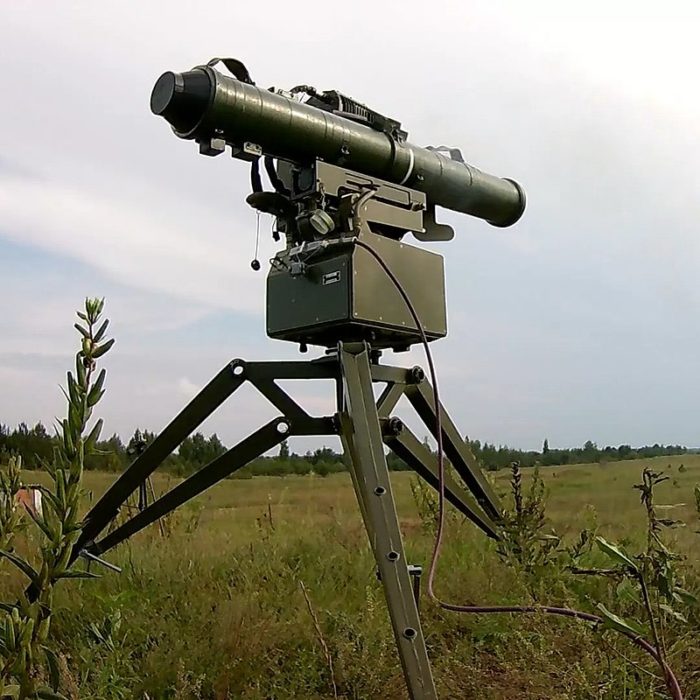
What we know about the “light anti-tank weapons” UK started supplying to Ukraine
“I intend to serve even after our victory!”
Osa smiles and her eyes light up as she talks about her past life before the army. She graduated from Zaporizhzhia National University with a degree in tourism and was an avid traveler, leading expeditions in Crimea and the Carpathian Mountains. However, everything changed in 2014 when her instructor went to war, and all of their adventures abruptly ended. With Crimea occupied and Donbas under siege, Osa felt compelled to join the army, where she found herself traveling to different regions like Donetsk and Kherson. Despite the challenges, Osa has no regrets.“Really and truly, I have no regrets about joining the army. The only thing that bothers me is the Soviet mentality of some of the officers. This needs to change. I think it will happen after our inevitable victory.”
